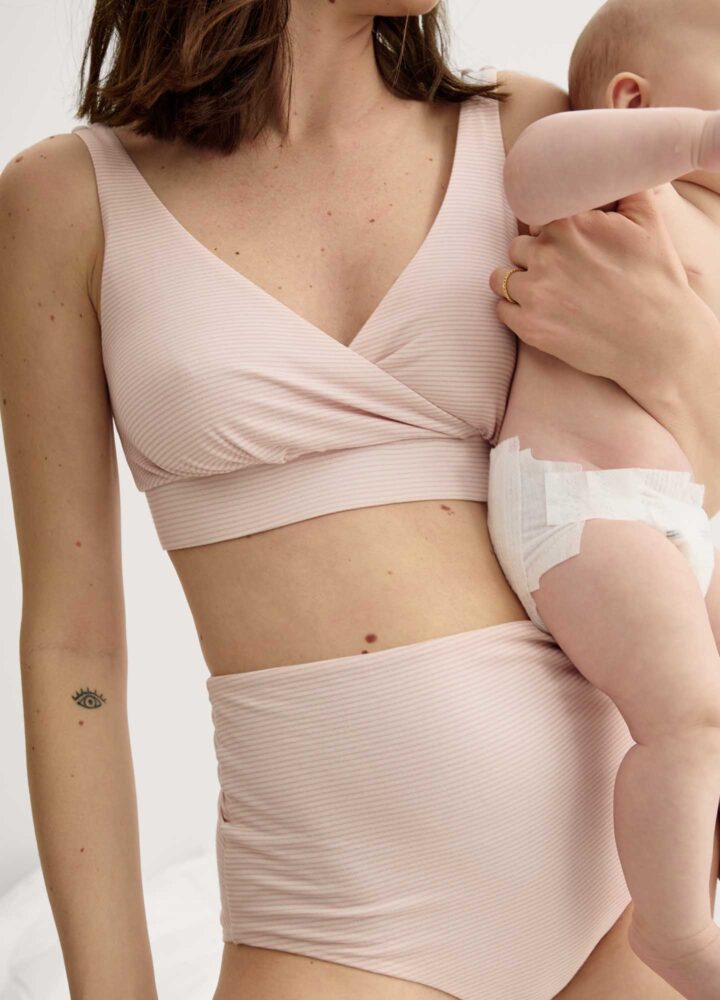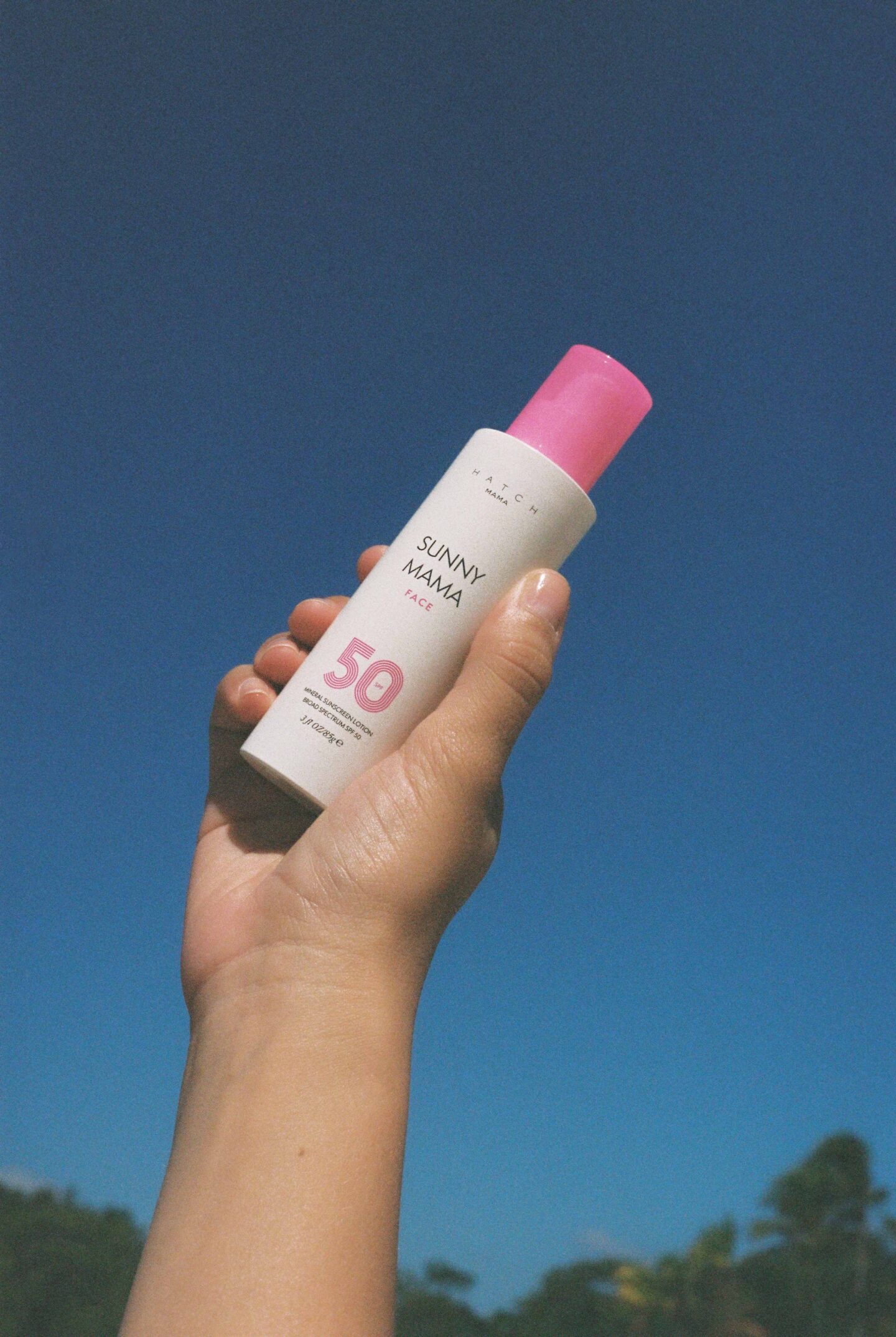If your little one just arrived, you’re probably turning into a love machine with all the kisses, hugs, cuddles, and snuggles you shower them with. And we don’t blame you! It feels sooooo good to nuzzle up next to your newborn to soak up those first precious moments of one-on-one tenderness.
Did you know that your snuggle time with your newborn can have many benefits for both you and your little one? Beyond that, it feels good and makes you both happy — love it. In particular, a specific type of cuddling with your baby, called skin-to-skin contact, has many different benefits for you and your precious new bundle of joy.
So curl up and let babe nestle into you. We’re here to review what skin-to-skin is and how experts believe it can benefit your growing family.
What Is Skin-to-Skin Contact?
Skin-to-skin contact is when you lay your baby directly on your bare chest so their belly rests against you. Since there is no clothing between the two of you, the practice is known as skin-to-skin contact and is an important influence on how a baby bonds with their new mother.
It’s impossible to pin down the first time skin-to-skin contact happened in human history, but this technique pops up all over the globe. Skin-to-skin contact really caught on in the 1970s in Columbia. The hospital didn’t have enough incubators for its premature infants, so they had to improvise to create warmth for the infants.
They discovered that when they put each newborn baby against its mother’s chest and wrapped them together in warm blankets to seal in the mother’s body heat, it warmed the infant up.
Skin-to-skin contact is still very important in neonatal units today, even with plenty of incubators around. Also known as the kangaroo mother method, skin-to-skin has many benefits for newborn babies, which we’ll explore below soon.
When Should Skin-to-Skin Contact Happen?
Skin-to-skin contact should happen as soon as possible after birth — pretty much immediately within the first hour after delivery. If your baby has a vaginal birth, then the doctor may not even fully dry the baby off before placing them against your chest. If you had a cesarean section (C-section) birth, it’s recommended to start as soon as you are stable post-surgery.
Skin-to-skin contact should last for at least an hour in those moments immediately after your baby is born. However, this is not the only time you can engage in skin-to-skin with your precious new little one.
What Are the Benefits of Skin-to-Skin Contact?
Many prominent health organizations, including the World Health Organization and the American Academy of Pediatrics, recommend skin-to-skin contact due to the variety of benefits it can yield for both mom and babe. Early skin-to-skin contact gives you an extra reason to cuddle with your new little one right away and promotes bonding, and reduces stress.
This practice can encourage infant development, help regulate a baby’s temperature, stabilize blood sugar levels, and calm them down as new residents of the great big outside world.
Additionally, if you are breastfeeding, skin-to-skin contact can help improve milk production.
Let’s take a closer look at each of these benefits now:
Promotes Bonding
Skin-to-skin contact provides intimate one-on-one time for you and your little one. This special time together helps your little one associate safety, comfort, and affection with you and your tangible presence, which in turn promotes bonding and establishes attachment.
The more skin-to-skin contact time you spend with your new little one as they grow throughout the first months of their life, the more you will get to know and understand them. All the cuddling and bonding time will also help you to better understand their body language and cues, which will help you intuit their needs.
Curious for more fun insights? Check out how your baby loves and receives love, based on their Zodiac sign, for some extra bonding material to fuel your next cuddle sesh.
Reduces Stress
Skin-to-skin contact can help reduce stress for both you and your new baby. When your little one rests closely against you, and you feel the warmth of their soft baby skin against your chest, it creates a special feeling that can help raise your oxytocin levels.
Elevated oxytocin levels can, in turn, lower your blood pressure, decrease your stress levels, and balance your hormone levels.
All that cute cuddle time that naturally relieves your stress can also reduce stress for your newborn. Studies show that skin-to-skin contact can help reduce pain in infants and lower their likelihood of crying.
Moreover, contact can help decrease cortisol levels (the hormones your body releases when you feel stressed). One study found that newborns’ cortisol levels were markedly lower after 20 minutes of skin-to-skin contact.
Encourages Infant Development
Skin-to-skin contact can encourage infant development in a couple of different ways. For one thing, the practice helps your little one relax, which often helps them fall asleep more easily and sustain a higher-quality sleep cycle. Skin-to-skin may also promote a deeper sleep that can help support infant brain patterning and development.
Cuddle time helps improve infant nutrition to further promote growth and development. Since this contact helps lower cortisol levels, the decrease in stress hormone levels means that your baby’s other body systems can function optimally, including their gastrointestinal system. They can better absorb and digest nutrients, which helps sustain them and improve their weight gain.
They also don’t have to dedicate as much of their tiny body energy towards warming themselves because your skin contact and body heat are doing all that loving work for them, so energy can go towards their growth, development, and nourishment.
Improves Newborn Temperature Regulation
Skin-to-skin contact helps enhance thermoregulation in newborn babies, which is a process that happens when your body sustains its internal temperature, even when the outside temperature changes. Some newborn babies, particularly premature babies, have trouble with thermoregulation.
With skin-to-skin contact, infants can better regulate their body temperatures, thanks to you. As your baby snuggles up against your breasts, your breasts will adjust up or down in temperature to warm up or cool down the baby’s body.
Can Help Boost Breast Milk Production
If you’re a breastfeeding mom, skin-to-skin contact can help improve your milk supply, which could make breastfeeding easier. This cuddly type of direct skin contact activates a specific part of your new baby’s brain, which prompts your baby to move towards and attach to your breast.
As your baby becomes more familiar and comfortable with latching onto and suckling from your breast, your milk production will likely become more prolific in order to sustain their needs. Cue sorrrrrrre nips and boobs, right? That’s why we’ve developed a feeding-friendly nursing bra so comfortable it feels like you’re wearing a plush cushion.
Add a few mom items to your birth plan, like the Skin To Skin Bra is also important to help soothe your breasts. Enter your era as a feeding queen by rocking this ballet neckline bra that lacks hardware for ultimate comfort. Plus, up this fit even more with our Anti-Leakage Pads for a little extra coverage and cushion for your day.
Snuggle Into Postpartum With Skin-to-Skin
Whether you’re breastfeeding or bottle-feeding with formula, skin-to-skin contact has many benefits for both you and babe. This skin time snuggling is an important way to bond with your precious new little one and to quickly learn to interpret your baby’s needs.
Additionally, skin-to-skin contact can help enhance infant brain development and body growth and development, as well as reduce stress and maintain temperature regulation.
Because of these many benefits of skin-to-skin contact, there is no limit on how much time you should spend engaging in this practice with your little one. So snuggle up together, let your new tiny human nestle into you, and enjoy all the benefits together!
Sources:






